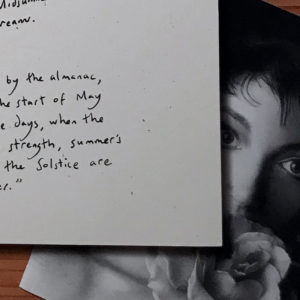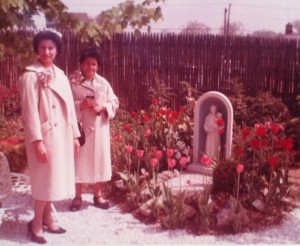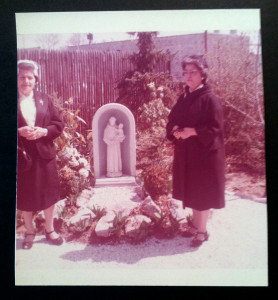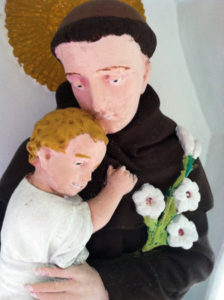Once again from the Better Late Than Never Department, here is our monthly gift to you: Your printable Convivio Book of Days calendar, this one for June. It was a hectic close to May and it’s been a hectic start to June, and since there’s not much happening at the start of the month, I figured all right then, we would ease into this month’s calendar. In fact, the first red letter day of the month isn’t until the 13th, when we celebrate the Feast of St. Anthony of Padua.
Now my grandmother, Assunta, she would have been celebrating St. Anthony in her way from the start of the month. St. Anthony was her guy, and Grandma would offer thirteen days of novenas in his honor beginning on the First of June. She would sit there in her upright beach chair in front of the statue of St. Anthony, the one that Dad painted by hand, and mumble her prayers, prayers she would read from books sent to her by the children at the orphanage in Padua named for St. Anthony, the one she supported for years with gifts. They were good friends, in a way, my grandma and St. Anthony, but this is how we Italians are, talking to the saints that guide us, as if they are right there in the room with us.
My mom remembers as a girl coming in from outside on warm June days just like this and wandering through the house, wondering, “Where’s my mother?” and there she would be, with Mamam, the neighbor, the one who delivered my mom soon after the doctor had left the house because he didn’t think the baby would be coming any time soon. She was like a second mother to my mom, Mamam was, and she and Grandma would be in the house, these June days, reading and reciting before the statue of St. Anthony, saying their novena. Grandma would read the prayers out loud in Italian, and Mamam, who didn’t know how to read, would say the response. She’d catch a glimpse of my mom, little girl that she was at the time, and wave her in. “Come on, Millie, come pray with us.” Just what a little girl wants to do on a warm June day. But she was seen, and now she was stuck there. It was too late to turn away. And so my Mom would sit there, too, with Grandma and Mamam, saying “Pray for us” in Italian after each petition to St. Anthony. There was no turning away from the old friend.
This would go on each day through to St. Anthony’s Day on the 13th. I imagine not many people do this anymore. For me, a little boy watching my Grandma sit and pray on her beach chair by the statue in the yard, it was always a Grandma thing, something that all the grandmothers I knew did. Then again, all the grandmothers I knew as a child were Italian. I remember the first time I met the grandmother of another boy I knew, a grandmother who was tall and who spoke proper English. I was a little taken aback. It was just plain weird. Like the time in 1970 when my grandparents went back to Italy and came home again with photographs in color. Color? Italy, to me at 6-years old, was sepia-toned.
But I digress. Back to the calendar. June is the month of Old Midsummer, of William Shakespeare and his Midsummer Night’s Dream. It is, as well, the month of Bloomsday and Juneteenth, all days that have some literary connection. It was Ralph Ellison who titled a novel Juneteenth, a name taken from the obscure June holiday that commemorates the formal and official end of slavery in Texas, and Bloomsday is of course based on the work of James Joyce, who wrote about the day’s adventures through Dublin of a character named Leopold Bloom in his novel Ulysses, and now, each 16th of June, people all over the world call down his memory. If there is a cover star of sorts on this month’s calendar, it would be Kate Bush, who recorded a song in 1989 titled “The Sensual World,” a song that is steeped, too, in James Joyce’s Ulysses and in Bloomsday, based as it is on the closing passage of the book, a soliloquy by Molly Bloom, Leopold’s wife.
So many words on our lips––prayers and plays, novels and soliloquies–– in a month of beauty. With June we welcome summer by the almanac. We embrace the gentle time of year, the sensual world. Go, enjoy it.



